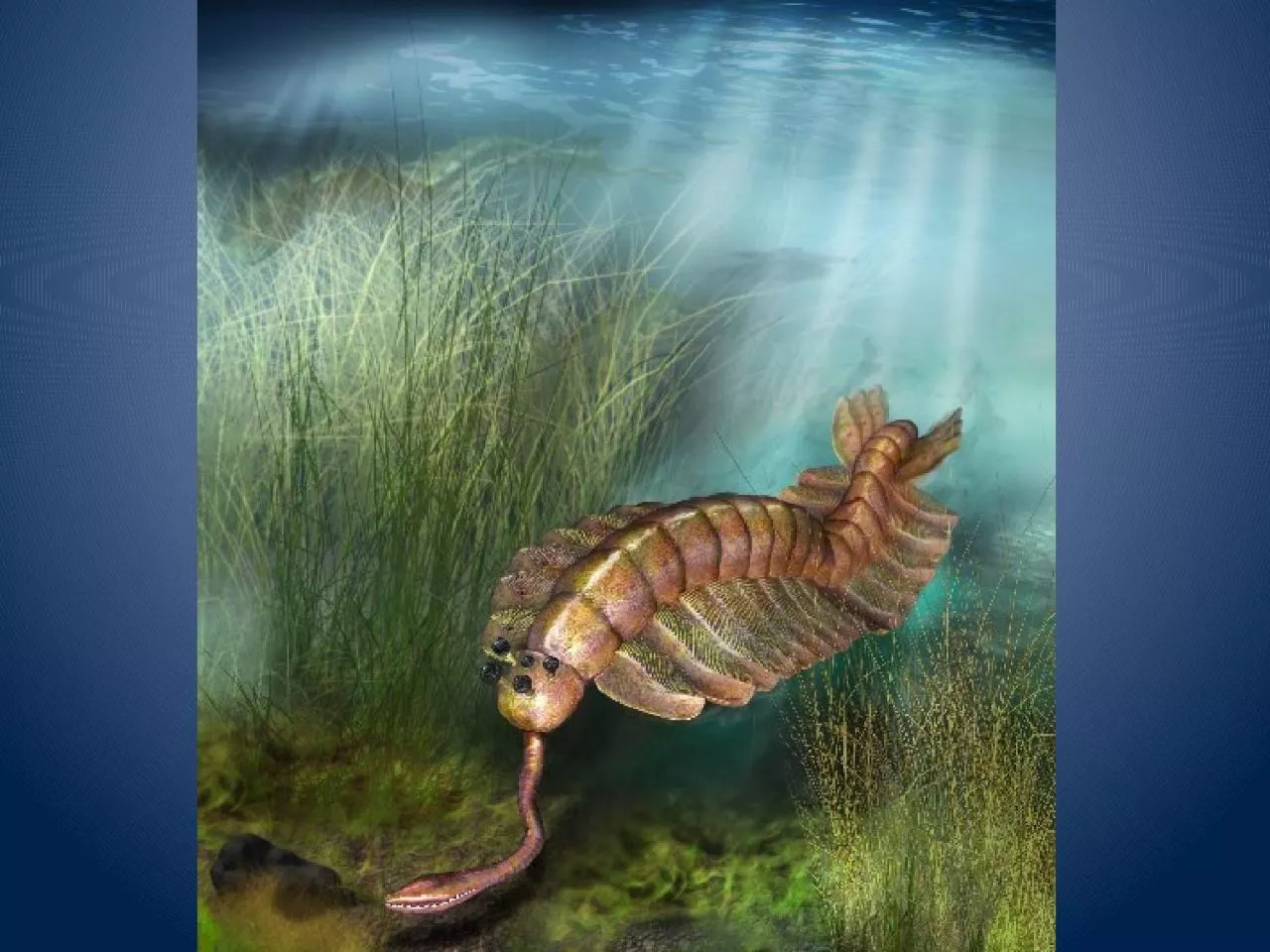

Opabinia Hurdia Erwin and Valentine The Construction of Animal Biodiversity 2013 Erwin and Valentine The Construction of Animal Biodiversity 2013 Monosiga Amphimedon Trichoplax Nematostella ID: 1046032
Download Presentation The PPT/PDF document "Stem Arthropods Anomalocaris" is the property of its rightful owner. Permission is granted to download and print the materials on this web site for personal, non-commercial use only, and to display it on your personal computer provided you do not modify the materials and that you retain all copyright notices contained in the materials. By downloading content from our website, you accept the terms of this agreement.
1.
2.
3. Stem ArthropodsAnomalocarisOpabiniaHurdia
4. Erwin and Valentine, The Construction of Animal Biodiversity, 2013
5.
6. Erwin and Valentine, The Construction of Animal Biodiversity, 2013
7. MonosigaAmphimedonTrichoplaxNematostellaDrosophilagenome size (Mb)41.616798450180# genes9,100?11,51418,00014,601# cell types11242050# T.F.’s?5735min. 87min. 87# T.F. families56?91010 microRNA08040152Genomic Complexity(Erwin, 2009; Erwin & Valentine 2013)
8. Erwin et al. 2011, Science
9. Strongylocentrotus
10.
11. Sea Urchin dGRNBiotapestry.org
12. Sea Urchin endomesoderm GRN
13. Gene Regulatory Network StructureErwin and Valentine, Forthcoming, 2012; after Davidson
14. Davidson & Erwin, 2009
15. Origin of EumetazoaOrigin of DevelopmentalToolkitIncrease in miRNA families; complexityof dGRN interactions Most signalling pathwayspresent
16. Fedonkin et al The Rise of Animals, 2007
17. Erwin and Valentine, Forthcoming, 2012
18. Genetic inheritanceEtEt+1Natural selectionGene poolGene poolEcological inheritanceNatural selectionGenetic inheritanceGene poolGene poolNatural selectionNatural selectionEcologicalSpilloverEcologicalSpilloverSpecies 1Species 2Ecosystem Engineering
19. Cambrian Ecosystem EngineeringArchaeocyathid reefs (+)Sponges & other filter feeders (+)Burrowed sediments (+/-)Shelly substrates (+)Mesoozooplankton (+)
20. Ecological SpilloversSponges: sequestering carbon via filtration. Oxidation of oceans allow increased production of collagen. Burrowing: change in S isotopes, enhances primary productivity in seds, increases biodiversity
21. P & P DefinitionsInnovation “improve on existing ways of doing things” (which sounds to a biologist like adaptation)Inventions “change the ways things are done”
22. Invention is the creation of something new and distinct (contrast with variation on established themes)Innovation occurs when inventions become economically or ecologically significantInvention & InnovationJosephSchumpeter(1883-1950
23. Origin of EumetazoaOrigin of DevelopmentalToolkitIncrease in miRNA families; complexityof dGRN interactions Most signalling pathwayspresent
24. Defining NoveltyAre ‘novelty’ and ‘innovation’ synonymous? Character based: new construction elements of a body plan (not homologous to pre-existing structure) Process based: novelty should involve a transition between adaptive peaks and a breakdown of ancestral developmental constraints so that new sorts of variation are generated (Halgrimsson et a. 2012 J. Exp. Zool)
25. Evolutionary novelty originates when part of the body acquires individuality and quasi-independenceInvolves origin of new character identity rather than character state (homology)
26. How are new evolutionary spaces created?Potentiated by broader environmental setting (physical, genetic, ecologic)Actualized by genetic and developmental innovations leading to a new cladeRefined by further developmental and ecological changesRealized as innovations by ecological expansion and evolutionary success
27. Mechanisms of Organizational GenesisTransposition and refunctionality (var)Anchoring diversity (ecology)Incorporation and detachment (var)Migration and homology (niche const)Conflict displacement/dual inclusion (ETI)Purge and mass mobilization (ecology)Privatization and Business groups (ecol/ETI)Robust action and multivocality (?)
28. Nature of ContingencySampling errorUnpredictability of the course of historySensitivity to initial conditions (Beatty 2006)Sensitivity to external disturbanceMacroevolutionary stochasticity
29. Nature of ContingencySampling errorUnpredictability of the course of historySensitivity to initial conditions (Beatty 2006)Sensitivity to external disturbanceMacroevolutionary stochasticityAnd does the ‘topography’ of historical contingency change over time?
30.
31. Modern SynthesisTransmission Genetics Simple path from genotype to phenotypePrimacy of genetic inheritanceSelection within populations as primary driver of evolutionOpportunisticUniformitarian
32. Emerging PerspectivesNo simple mapping from genotype to phenotype (evo-devo)Multiple forms of inheritanceMultiple levels of selectionImportant roles for mutation and drift in addition to selectionMacroevolutionary lagsNon-uniformitarian
33. Search Vs ConstructionInnovation is often described as search through a space of “the adjacent possible” (Kaufmann, Wagner)
34. Grassland Evolution
35. Grass PhylogenyKellogg, 2001, Plant Physiology
36. Macroevolutionary Lags
37. How are new evolutionary spaces created?Potentiated by broader environmental setting (physical, genetic, ecologic)
38. How are new evolutionary spaces created?Potentiated by broader environmental setting (physical, genetic, ecologic)Actualized by genetic and developmental innovations leading to a new clade